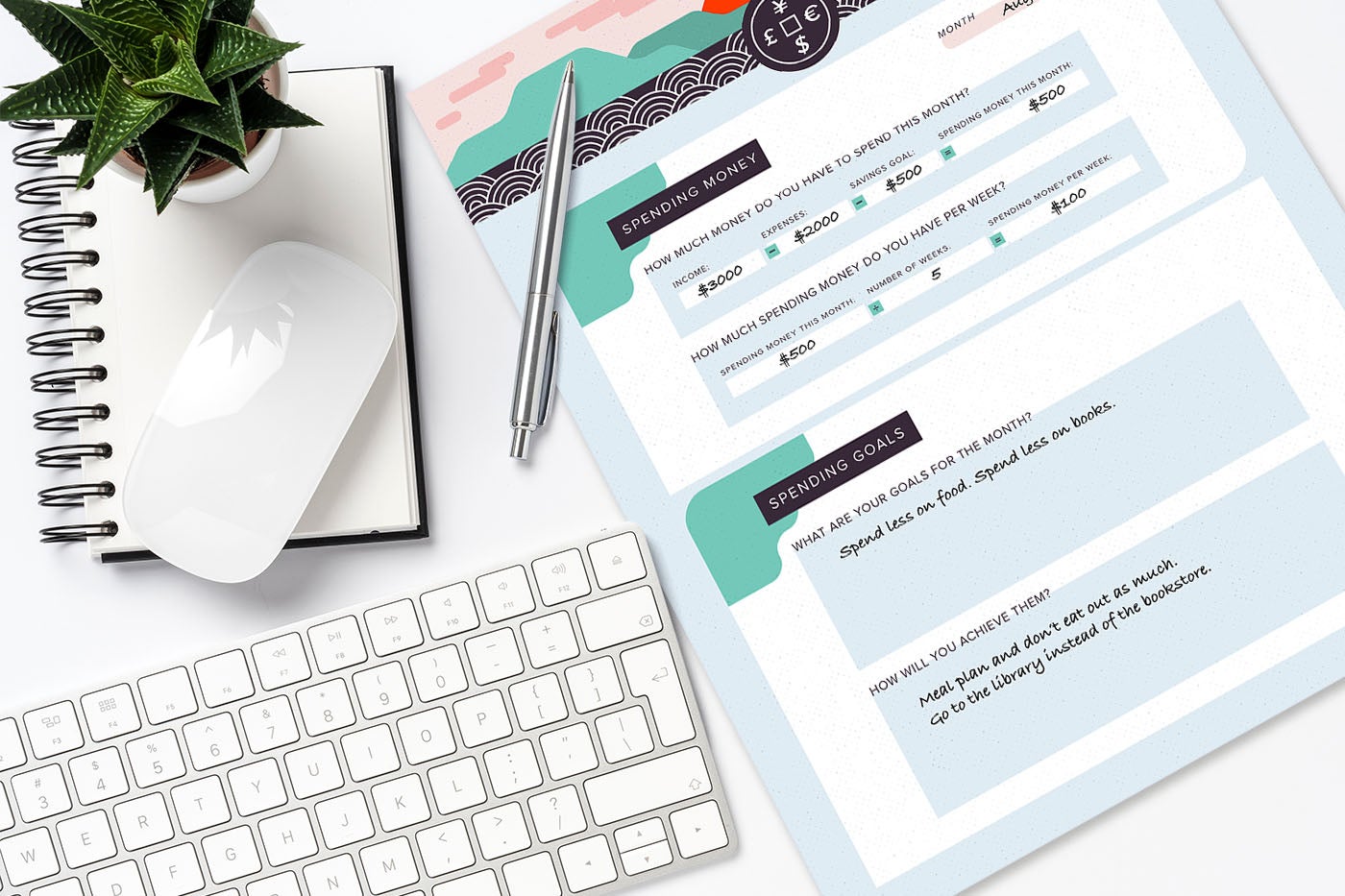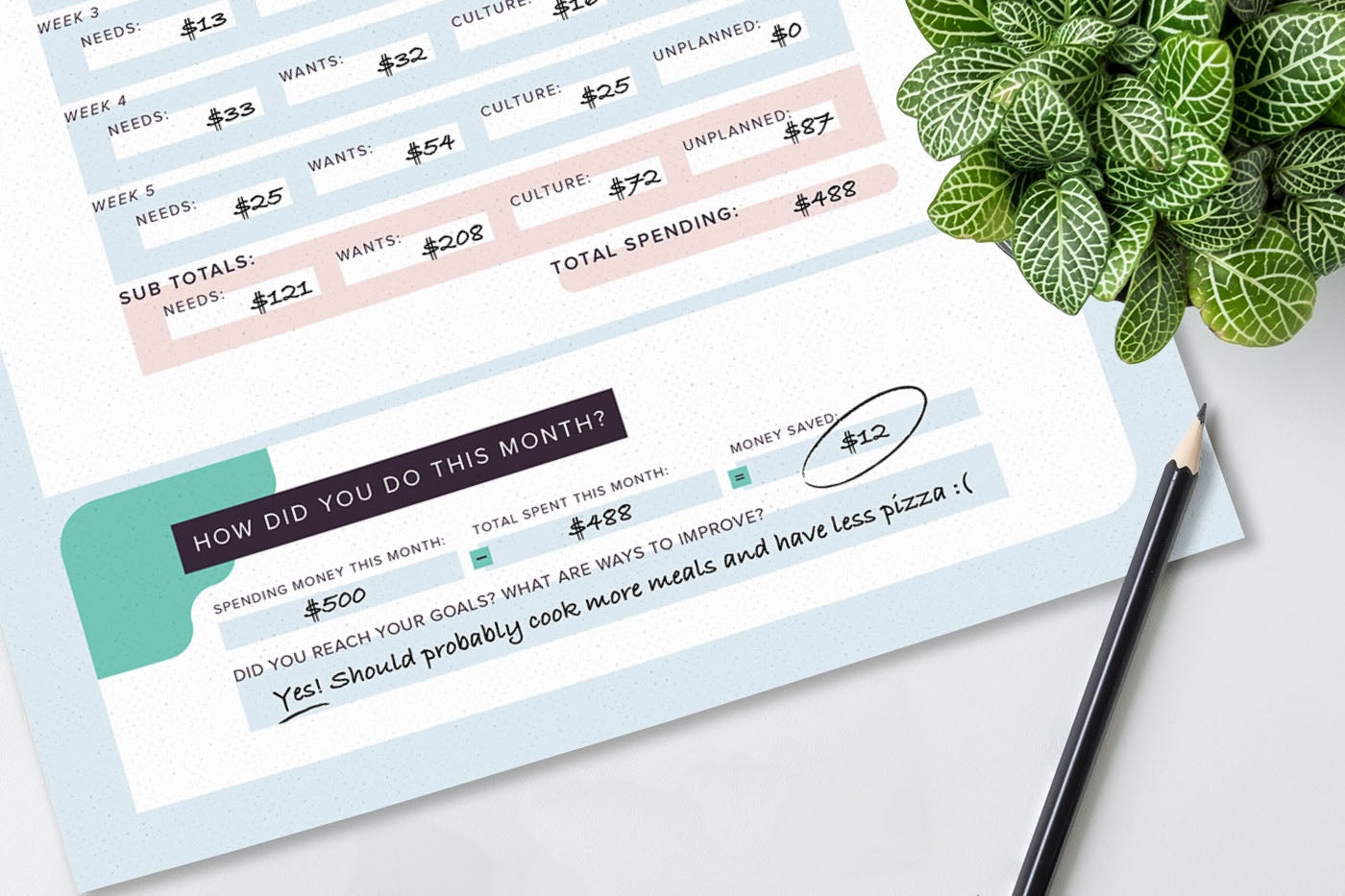Modern payment technologies such as debit cards, Apple Pay, Venmo, and one-click checkout have made the physical act of spending money effortless. But while modern technology is convenient, it can also lead to mindless spending, making saving difficult.

The Japanese tradition of using a kakeibo, which translates to “household finance ledger,” offers an easy solution to mindless spending habits. This budgeting system combines tracking purchases with the habit of mindfulness to reign in unnecessary spending and help you achieve savings goals.
In This Piece
What Is Kakeibo?
Kakeibo was invented in 1904 by Hani Motoko, Japan’s first female journalist. It is an accounting system originally designed for housewives—but it can be adapted and used by almost anyone. It’s designed to give you control of your budget and make you aware of spending habits. The simple system asks users to answer four questions:
- How much money do you have available?
- How much would you like to save?
- How much are you spending?
- How can you improve?

Although a kakeibo is a simple ledger, it can be a powerful tool, especially for people accustomed to keeping up with finances on computers and phones. Kakeibo requires you to write down everything you buy and streamline your budget by grouping purchases into four categories:
- Things you can’t live without, like food, toilet paper, and shampoo.
- Purchases you enjoy but don’t need, like a takeout meal or a pair of new shoes.
- Things like books and museum visits.
- Expenses you weren’t anticipating, like a doctor’s visit or car repair.
The four-category system helps kakeibo users become more mindful of their spending habits and avoid wasting money on things that don’t align with their goals.

Benefits of Kakeibo
A kakeibo is an excellent tool for those who are interested in minimalism. Its special attention to mindfulness separates it from other budgeting systems, making it a good match for those who want to ensure their money goes toward the things that bring joy to their lives.
There are many related benefits to using kakeibo:
- It simplifies finances by grouping spending into four distinct categories.
- It encourages realistic monthly savings goals.
- It pays attention to present, past, and future.
- It encourages saving small amounts daily rather than occasional big sums.
- It celebrates small achievements.
How to Use Kakeibo
Kakeibo combines planning, journaling, and keeping a ledger to bring mindfulness and intention to your spending habits. Here’s a step-by-step guide to using your kakeibo.
1. Establish your budget.
At the beginning of the month, set your budget. Write down your monthly income and fixed expenses. Don’t forget about any debt you’re trying to pay down. Subtract your expenses from your income to determine how much you have for all other monthly spending.

2. Set your savings goal for the month.
Savings goals are an important part of kakeibo. The method encourages setting realistic monthly goals and jotting down what you’re saving for. Once you’ve decided your goal, set aside your savings by deducting your goal amount from your available spending money.

3. Keep track of your spending.
Each week, as you make purchases, jot them down in your ledger. Similar to the recent trend of bullet journaling, kakeibo requires you to track your spending in real time, with pen and paper, which helps you slow down, pay attention to the present moment, and think about the future impact of your spending.

4. Calculate money spent in each category.
At the end of the month, determine how much money you spent on needs, wants, unexpected expenses, and cultural purchases.

5. Calculate money spent and saved.
Add up all your purchases and deduct the amount from your total budget from step 1. This number is the amount you saved. Compare it to your savings goal amount.

6. Assess your performance.
Another component that separates kakeibo from other budgeting methods is its mindful approach to reflecting on your performance. Did you meet your goals? If so, jot down what went well this month and how you can carry your success forward. If not, write down the reasons you didn’t meet your goals and how you can improve the next month.

Tips for Mastering the Kakeibo Method
Budgeting and saving take practice. Being as consistent as possible is important. Here are some other tips for putting kakeibo to work in your financial life.
Remember to be mindful.
The thing that makes kakeibo unique is the added component of mindfulness. Pay close attention to your spending and think about whether or not your purchases make you happy and help you achieve your goals.
Write down your spending as you go.
Keep your journal with you throughout the day and jot down your spending as you make purchases. This will help you be mindful of how your money is spent.
Embrace setbacks.
Didn’t meet your goals for the month? Try not to be discouraged. Reflect on your reasons for overspending and move forward without judgment.
Make sure your family joins in.
Kakeibo works best as a personal budgeting system, but that doesn’t mean your partner or children can’t join in. Add one extra step at the beginning of the month to assign each person a spending budget and savings goal. Everyone can keep their own kakeibo as long as they have their own goals.
If saving money and sticking to a budget has been a challenge for you in the past, kakeibo could be a great fit. The analog method of recording your purchases encourages you to pay closer attention to your spending than is required with digital methods. Kakeibo also stands out from other budgeting systems by emphasizing mindfulness and prompting you to both plan in advance and think about your past performance.
Kakeibo is a great method, especially if you like the intentionality of pen and paper. But you can also pair it with other tools, including debt management apps such as Tally or the Credit Report Card, which helps you understand how you’re doing financially when it comes to credit history. The goal is to find a system that works for you, and kakeibo may be the place to start. Download our free kakeibo template and resources to get started.
You Might Also Like
April 17, 2023
Budgeting and Saving Money
April 3, 2023
Budgeting and Saving Money
March 8, 2023
Budgeting and Saving Money






